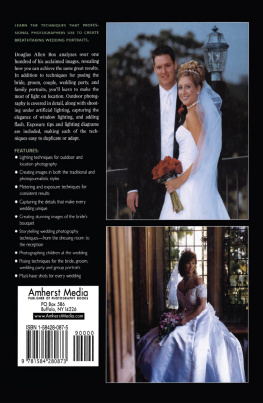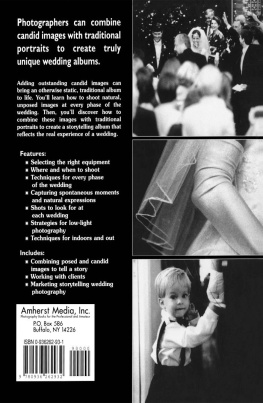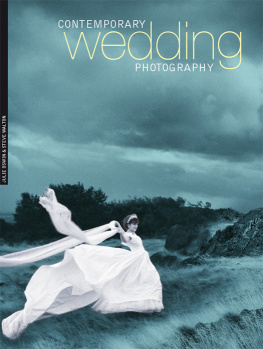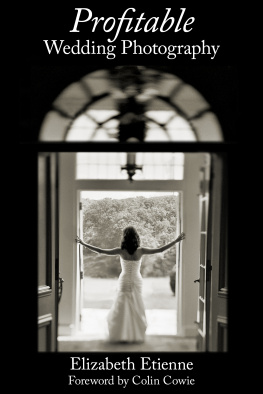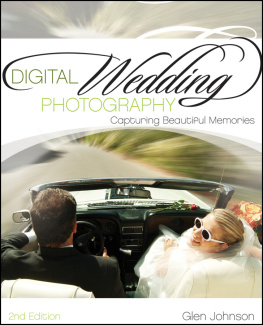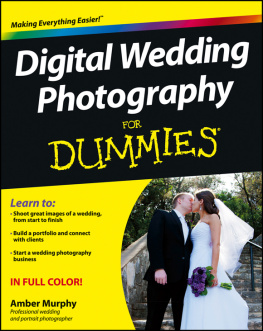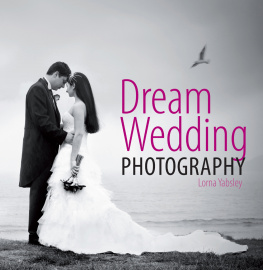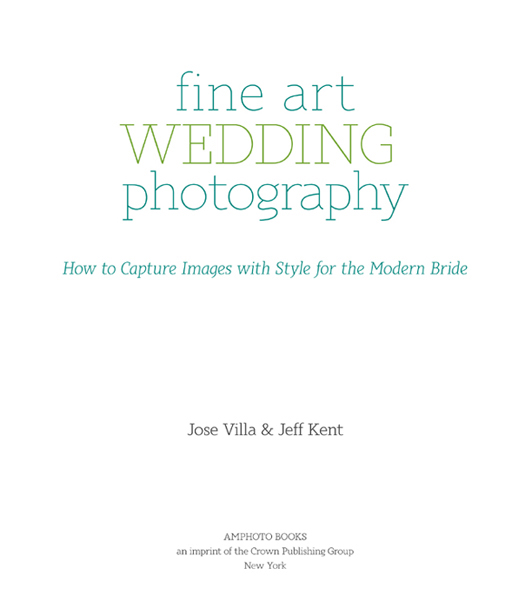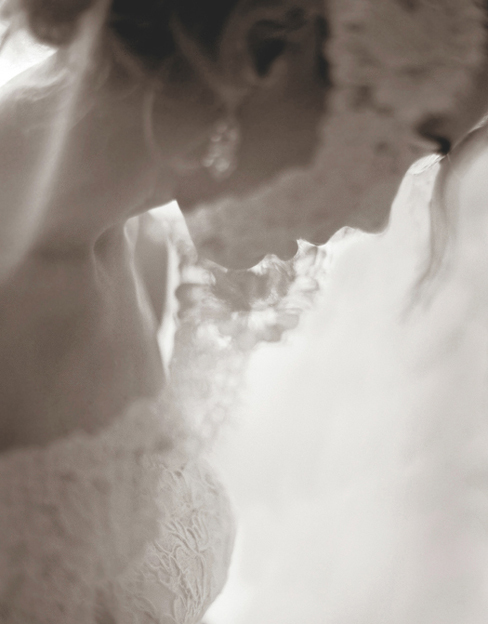
Copyright 2011 by Jose Villa and Jeff Kent
All rights reserved.
Published in the United States by Amphoto Books, an imprint of the Crown Publishing Group, a division of Random House, Inc., New York.
www.crownpublishing.com
www.amphotobooks.com
The bride looked down as her mother helped her put on her shoes. With light shining from her left, through her veil, I captured this beautifully backlit image. The open aperture and slow shutter speed allowed the light to wrap around my subject while outlining her features in profile. Contax 645, 80mm lens, ISO 200 f/2, at 1/15 sec. Fujifilm Neopan 400 film rated at 200e
AMPHOTO BOOKS and the Amphoto Books logo are trademarks of Random House, Inc.
Library of Congress Cataloging-in-Publication Data
Villa, Jose, 1980
Fine art wedding photography : how to capture images with style for the modern bride / by Jose Villa and Jeff Kent.
p. cm.
Includes index.
eISBN: 978-0-8174-4971-1
1. Wedding photography. I. Kent, Jeff, 1974- II. Title.
TR819.V55 2010
778.993925dc22
2010034580
Front cover and interior design by Kara Plikaitis
Cover Photograph by Jose Villa
v3.1
Acknowledgments
JOSE VILLA
I would like to thank my partner, Joel Serrato, for his continued love and support.
Without him this would not have been possible.
My deepest gratitude goes to my family for supporting my passion for photography.
Thank you, also, to the best assistant in the world, my baby sister, Nancy, who has been with me since the very beginning.
Film, you make me so happy. Thank you to Fujifilm for making the best film in the world.
Also, thanks to Richard Photo Lab in Los Angeles for being the best photo lab ever. You always pull through, even under my craziest deadlines, and for that I am profoundly grateful.
JEFF KENT
Many thanks to the fine team at Amphoto Books. In particular, thanks to Julie Mazur for identifying and pulling this story out of us, and to Carrie Cantor for her tireless work shaping the final content.
My contributions to this work would not have been possible without the education and support I have received from the Professional Photographers of America and the excellent team at Professional Photographer magazine, especially Cameron Bishopp, Leslie Hunt, Joan Sherwood, Debbie Todd, Karisa Gilmer, and all of my past and present colleagues who have dedicated themselves to helping photographers succeed.
Of course, my sincerest appreciation goes to my wife, Kari, a wonderful partner, mother, and person, for patiently listening to all my gripes about this and every other project.
And to my inspiration, Little O, whose smile motivates me each and every day.
Contents
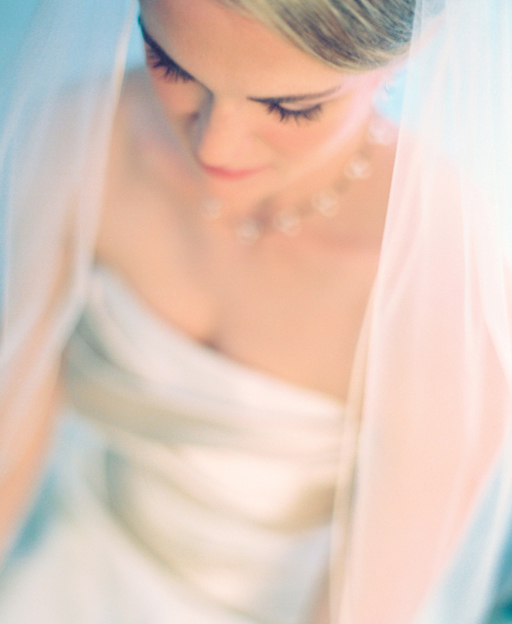
This image was captured in a dark church with one small window high above and to the right of the subject. Aside from the small window light, the only other illumination was a funky little tungsten light. After placing the subject in a spot that combined these two light sources, the exposure was made with 800-speed film rated at 400, overexposed one stop with a widened aperture for a shallow depth of field. Contax 645, 80mm lens, ISO 400, f/2 at 1/30 sec. Fujifilm 800 NPZ film rated at 400
Preface
In todays wedding market, design is paramount. Modern media have influenced the tastes of couples and created a sense that weddings are more than a ceremony and a party. Contemporary weddings are cohesive, thematically designed events that couples use as an expression of their personality.
Photography has become an increasingly vital part of the wedding design. Todays most successful wedding photographers do more than merely document; they craft images artistically to fit a comprehensive design. A couple chooses a photographer based on how his or her style fits into the overall vision for the wedding and how well he or she can integrate the image creation into the theme of the event. To reach the upper tier in todays wedding market, photographers must be well-rounded professionals who understand the many elements that need to come together at a wedding. They must have a sense of the grander scheme and be able to contribute to the overall look and feel of the event.
This is the reality of todays wedding photography, especially high-end wedding photography. However, this role for the wedding photographer didnt evolve overnight. For decades, wedding photography had a reputationfair or notfor being static and overly posed. Far too often, wedding images were those stiff shots for which families lined up like they were facing a firing squad. Then, in the 1990s and early part of this century, photojournalism swept across the industry like a monsoon floodslowly, surely changing the landscape of modern wedding photography. Photographers turned the paradigm on its head, eschewing the old approaches in favor of candid imagery created with limited photographer-subject interaction. The new school of documentary wedding photographers often ignoredor dramatically adaptedtraditional posing rules and lighting techniques. These photographers didnt look to wedding or portrait photographers as their heroesrather they sought inspiration from photojournalist icons like Henri Cartier-Bresson, Robert Capa, Alfred Eisenstaedt, Margaret Bourke-White, and W. Eugene Smith. Concepts like slice of life and moments in time filled marketing language as photographers billed themselves as fly-on-the-wall documenters whose free-flowing approach appealed to the tastes of young couples.
The change in style also ushered in a change in perception about wedding photography. No longer seen as the vocation for conservative practitioners adhering to age-old guidelines, wedding photography was suddenly fun, adventurous, and creative. There was a freedom to the work that hadnt been present in decades. As a wedding photographer, you didnt have to spend all day snapping posed shots of extended families. You were free to roam, to document, to apply your unique eye to the event.
The pay improved as well. By bringing a new level of energy and motion to the work, industry leaders were able to demand five-figure rates while attracting clients from Americas most elite circles. Not surprising, when rates started to increase, so did the number of wedding photographers. It seemed easier than ever to make a living from photography, and shutterbugs from all walks of life started migrating to the wedding market.
The role of digital imaging cant be underestimated in this process. Easy-to-use automated digital cameras significantly lowered the barrier to entry, as did Adobe Photoshop and a host of digital-imaging software that helped photographers skip the lab altogether. Digital workflow issues aside, it was simpler than ever to become a pro wedding photographer. As a result, thousands of new practitioners entered the field, and the market began to swell at the middle.
The influx of new photographers proved to be both good and bad. On the one hand, the new photographers brought a much-needed youth movement to the field. Fresh ideas, approaches, and energy poured into the marketplace. Styles, techniques, and technology changed more in a decade than in the entire previous century. On the other hand, competition for established pros went up while the industrys overall standards of quality went down. Many of the new pros lacked any true photography training. Seeking a quick buck, they fired from the hip and hoped that their spray and pray shooting technique would yield enough lucky gems to earn them a happy payday. This wasnt photojournalismwhich involves careful consideration of where to place the camera, how to compose, and when to exposeit was snapshot photography, candid images that lacked any real sense of artistic planning or professional exposure principles.


